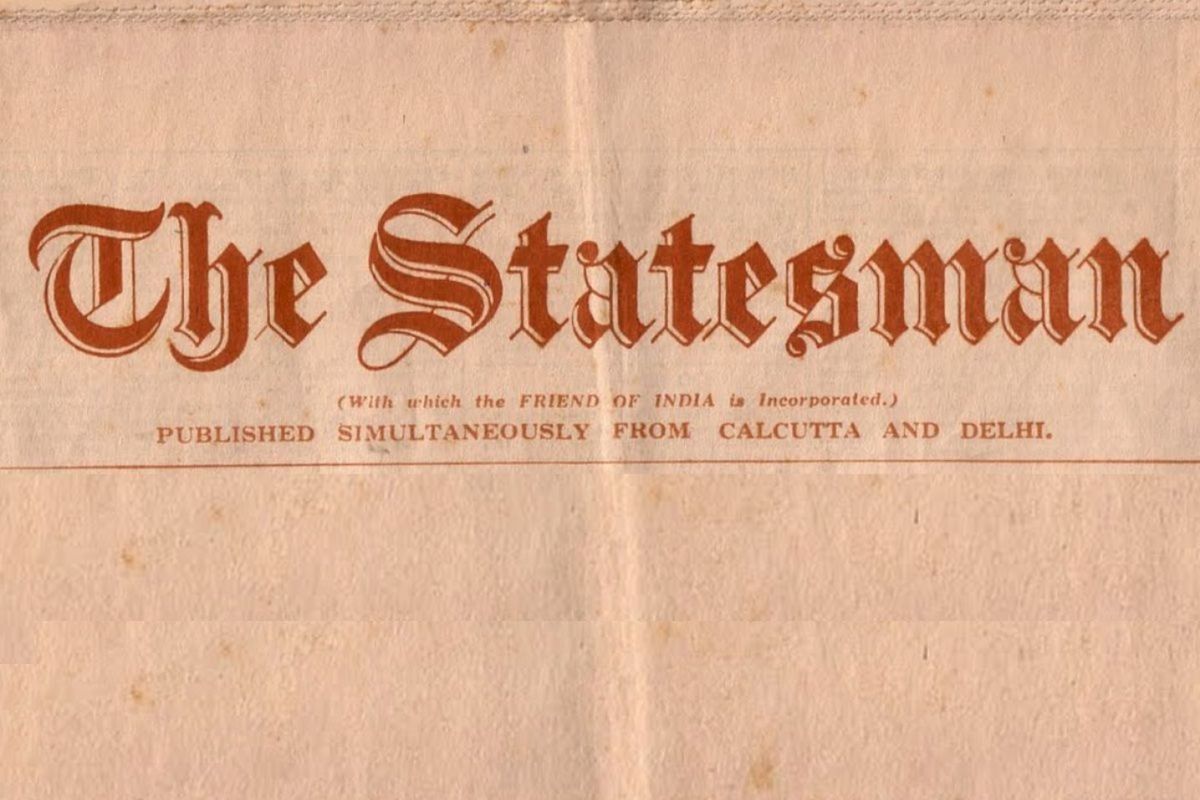Leading women personalities on what it takes to be a woman!
On International Women's Day, The Statesman talked to esteemed women personalities from various fields on what it takes to be a woman in our country and what empowers them.
On this day a century ago, these were some of the news items The Statesman readers got to read about India and the world.

OCCASIONAL NOTE
It is a curious fact that when the whole world, or most of it, is entirely agreed upon a point there is always someone prepared to come forward as advocatus diaboli. When the frontier from end to end teemed, or reeked, with stories of several Headquarters’ failure to foresee the course of events in the Afghan campaign someone came out as the protagonist of the Simla system. Even Indian “civilisation” has found its defender in Mr. Havell, who finds the social system of this country delightful and its art sublime. The Bagdad correspondent of our Allahabad contemporary has now taken up the cudgels on behalf of the War Office administration in Mesopotamia. Apparently he considers the methods of road-building and port construction employed there such as should commend themselves to a society of paupers on a desert island. We fear he is too late in the day and that most of those whose fate it was to go to “Mespot” must be ranked with the “myself and other thinking men” of Sir George Buchanan. The extravagance was, and, according to observers of every degree, until recently remained, brobdingnagian and for the rest of time all the best stories of the P.W.D. type will certainly be derived from Basra and the Tigris – just as all good “fish” stories are derived from the middle Thames, despite the fact that a few other streams have been known to furnish good sport to the angler.
Advertisement
BOMBAY FACTORIES
Advertisement
BOMBAY, NOV 21
The Bombay Factories Report for the year 1918 states that a feature of the labour problem during the year under report was the frequency of labour strikes for increases of wages owing to high prices. The strikes amicably ended on the grant of increases in wages. The Collector of Bombay, writing on the factory report, says a slight decrease in the employment of women, and also in the employment of children, in Bombay city was noticeable, while in the mofussil child labour was greatly increased. He attributes this to the failure of the monsoon last year. Figures in Bombay City show one child to 47 adults, while in Broach, Ahmedabad and Surat it is 1 to 6, and the number of child operatives in the mofussil in 1918 increased by 1,800 over the figures for 1917. In Bombay some mills employ no labour under 14, which is a welcome change.
RANGOON SHIP WRECKED
RANGOON, NOV 21
News has reached Rangoon of the ship Hyastan, built by A.C. Martin. She was on her way to Calcutta and had taken a pilot on board near the Sandheads when the cyclone began, and she was obliged to stear to south-west eventually going ashore. No lives were lost. Mr. Martin left for Calcutta this morning to learn full details. The ship was insured for pound 75,000. After her return from Calcutta it was Mr. Martin’s intention to send the Hyastan to England to be fitted with auxiliary engines. Telegrams have been received from Captain Brown, who was in command of vessel, stating, “Hyastan on beam ends. Dismasted. Lives saved. Hoping to arrange for salvage.” The telegram was despatched from Baruva, which is in the Ganjam district.
BEATEN BY A BLIND BOY
Signor Capablanca, the world’s chess champion, has been beaten by a sightless boy at Worcester Blind College, where he engaged fifteen of the students in simultaneous matches, in addition to twenty-five representatives of Worcester city, Stourbridge, Evesham, Malvern and other district clubs. The champion won thirty-nine of the forty games. The blind boy, Reed, who played the fourth board for the school, had the honour of the solitary victory. Signor Capablanca opened with the Ruy Lopez game, to which Reed replied with the Classical defence. The champion lost his Queen in the middle of the game, and also the exchange. He resigned on the thirty-seventh move. Reed is in his fourth year at the college and learned his chess there. He is eighteen years old.
MUNICIPAL PREMIUM BONDS
RANGOON, NOV 21
At the Rangoon Municipal Sub-Committee meeting, today it was decided to introduce the municipal premium bond loan system, subject to confirmation of the general meeting to be held on December 2, and the approval thereafter of the Local Government. The loan would be for Rs 2,00,00,000 in 200 thousand bearer bonds of Rs 100 each, divisible into quarters, redeemable in forty years by half yearly drawings of 2,500 bonds at each drawing. A 200 lakhs loan would have the effect of giving the municipality 100 lakhs in cash free of interest and without additional taxation.
Advertisement